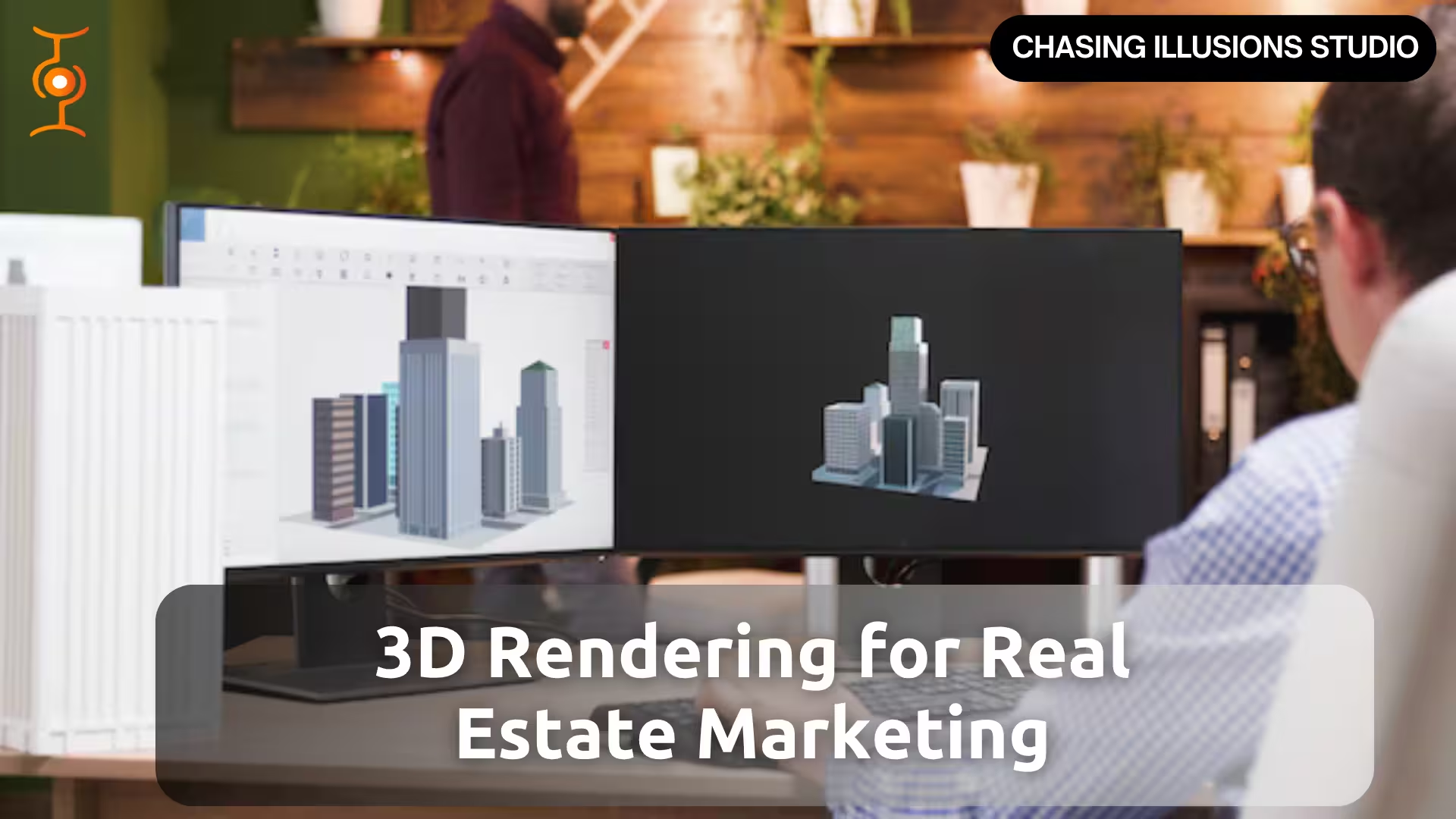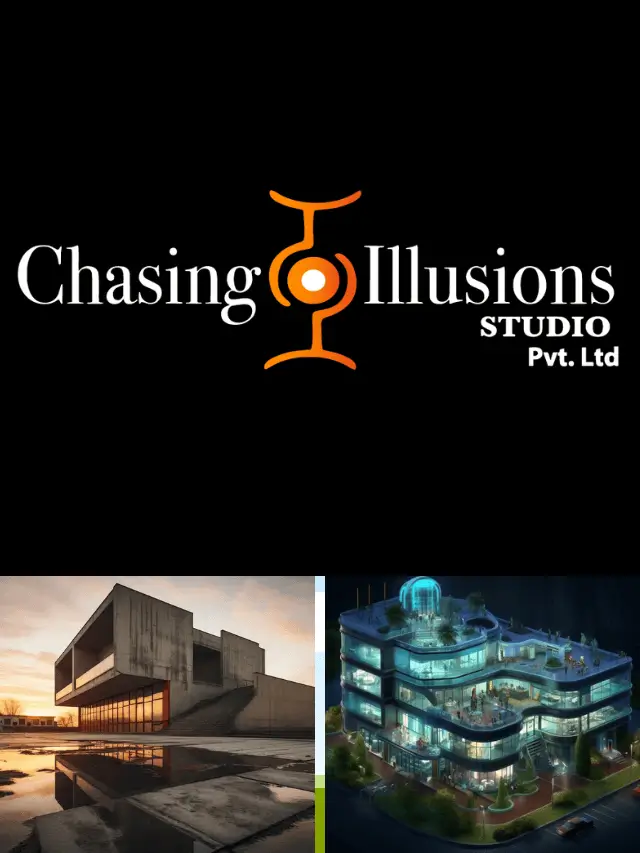
Why High-Quality 3D Rendering is a Game-Changer for Real Estate Marketing
Introduction: 3D Rendering
3D rendering is rapidly becoming the most crucial technology tool across multiple industries, driven by an immense surge in demand for high-quality visual content, immersive presentations, and cost-effective workflows that were simply not achievable in earlier years. In 2023, the global 3D rendering market was valued at over $4.4 billion—with forecasts showing explosive growth to more than $14.5 billion by 2030, at a compound annual growth rate (CAGR) of 17.9%. Adoption rates show that software accounted for 76% of the market share in 2023, with North America contributing a dominant 39% share and small to medium enterprises increasingly investing due to affordable cloud-based solutions.
In this article, we will explore the concept of 3D Rendering for Real Estate Marketing. Moving ahead, will cover related terms like: How to Render 3D Models Faster, Why 3D Rendering Speed Matters, Top Tips to Speed Up 3D Rendering, Benefits of 3D Rendering for Real Estate Marketing, How to Choose the Best 3D Rendering Service for Real Estate, 3D Renderings for Virtual Tours, etc. Overall, this is your complete guide to get started with 3D Rendering for Real Estate Marketing.
Why 3D Rendering Matters in 2025?
What is 3D Rendering in Real Estate Marketing?
3D rendering in real estate marketing refers to creating high-quality, realistic images or animations of properties using specialized computer software. These visualizations help potential buyers view a property’s design, layout, and features before it’s physically built or completed. It’s often used for virtual tours, promotional materials, and online listings.
How to Create 3D Renderings for Real Estate Property?
Creating a 3D rendering for real estate involves a structured workflow, blending technical skill and artistic vision. Here’s how it works, based on my experience producing renders for real estate properties.
Step 1: Gather Project Information
Start by collecting architectural plans, floor layouts, elevations, and reference materials such as textures, materials, and lighting preferences. The more accurate the data, the more realistic the render will be.
Step 2: Create the 3D Model
Using software like 3ds Max, Blender, or SketchUp, create a detailed 3D model of the property — including interiors, exteriors, furniture, and landscaping. Ensure all dimensions and proportions align perfectly with architectural drawings.
Step 3: Apply Materials and Textures
Add realistic materials like glass, concrete, wood, and fabric to bring the model to life. Use high-resolution texture maps and physically based rendering (PBR) materials for true-to-life reflections and surfaces.
Step 4: Set Up Lighting and Environment
Lighting is crucial — simulate natural daylight or artificial lighting setups to match the desired mood. Incorporate environmental elements such as sky, sun position, and surroundings for a photorealistic effect.
Step 5: Add Camera Angles and Composition
Choose the best camera angles to highlight the property’s key features — living spaces, entrance, balconies, and amenities. Composition should mirror how a photographer would frame a perfect real estate shot.
Step 6: Render the Scene
Use advanced rendering engines like V-Ray, Corona, or Lumion to produce high-quality images. Adjust render settings for the right balance between quality and speed.
Step 7: Post-Processing and Enhancements
Import the rendered images into software like Photoshop or After Effects for color correction, contrast adjustment, and sky replacement. Add details like people, plants, or vehicles for a lively atmosphere.
Step 8: Final Review and Delivery
Conduct a quality check to ensure accuracy in materials, lighting, and perspective. After client approval, deliver the final renderings in the required formats — high-resolution stills, 360° views, or walkthrough animations.
What are Affordable 3D Rendering Services for Real Estate Architects?
3D Architectural & Interior Walkthrough
What are Best 3D Rendering Software for Beginners?
For beginners stepping into the world of 3D visualization, choosing the right software is crucial for learning efficiently and producing professional-quality renders. The best tools for beginners combine an intuitive interface, powerful features, and a large support community. Whether you’re a student, architect, or real estate designer, beginner-friendly rendering software helps transform ideas into lifelike visuals without a steep learning curve. Here are some of the top 3D rendering tools to get started with in 2025:
How to Render 3D Models Faster: Tips & Tools for Improved Workflow?
When working on 3D modeling and rendering, efficiency is key. Whether you’re an architect, game designer, or product visualizer, rendering 3D models can often take up a significant portion of your time. Luckily, there are several ways to speed up the rendering process without compromising the quality of your work. Let’s share actionable tips and tools to help you render 3D models faster and more effectively.
-
Optimize Your 3D Models:
High-poly models can slow down the rendering process significantly. Try simplifying your models without losing key details. For instance, reduce unnecessary polygons and keep textures and materials to a minimum for quick renders. -
Use Real-Time Rendering:
Real-time rendering engines, like Unreal Engine or Unity, can deliver impressive results without the long wait times. These tools provide an interactive rendering experience, where you can see the changes in real-time. -
Switch to Faster Rendering Software:
Some 3D rendering software is optimized for speed. Consider switching to platforms like V-Ray, Corona Renderer, or Lumion that are known for their rendering speed and high-quality output. -
Enable GPU Rendering: If you’re using CPU-based rendering, consider upgrading to GPU rendering, which uses your graphics card to process renders faster. GPUs handle rendering tasks more efficiently and can significantly reduce render times.
-
Use Denoising Features:
Some modern rendering software comes with denoising capabilities that reduce the amount of time needed to clean up noise in renders. Enable denoising during the rendering process to minimize post-processing time. -
Take Advantage of Cloud Rendering:
Cloud rendering services like RenderHub and GarageFarm offer immense power and can render your models faster than your local machine. These services often provide faster turnaround times at competitive pricing.
Benefits of 3D Rendering for Real Estate Marketing
In today’s competitive real estate market, agents and developers are looking for innovative ways to showcase properties and attract potential buyers. High-quality 3D rendering has become an invaluable tool in real estate marketing, offering a range of benefits that traditional photography and static images simply can’t match.
1. Virtual Tours That Sell
With 3D rendering, you can create virtual tours of properties, allowing potential buyers to explore the space remotely. Whether they are on the other side of the world or just a few blocks away, 3D visualizations provide an immersive experience that static images cannot.
2. Improved Property Presentation
A 3D rendering can show off the true potential of a property by enhancing the visual appeal. By highlighting architectural features, interior design elements, and landscaping in full 3D, you make it easier for buyers to imagine themselves in the space. This can lead to quicker decision-making and more inquiries.
3. Realistic Previews of Unbuilt or Under-Construction Properties
For developers working on properties that are still in construction or have not yet been built, 3D rendering offers a lifelike preview of what the final product will look like. This is especially valuable for off-plan sales, as buyers can see the property before it’s even built, complete with details like light placement and room layout.
4. Faster Decision-Making for Clients
High-quality 3D renderings allow clients to visualize their future homes, offices, or commercial spaces much more effectively than flat architectural drawings. This helps them make faster, more informed decisions, reducing the time spent in the decision-making process.
5. Enhanced Marketing Materials
3D renders can be used to create high-quality marketing materials like brochures, websites, and social media content. This allows real estate professionals to showcase properties in a more visually compelling way that grabs attention and engages potential buyers.
How to Choose the Best 3D Rendering Service for Real Estate?
Now that you understand the benefits of 3D rendering for real estate marketing, it’s important to choose the right rendering service for your needs. Here are some tips:
-
Look for Experience: Choose a 3D rendering service with a proven track record in real estate. Check their portfolio to see if they have worked on similar projects.
-
Consider Turnaround Times: For real estate marketing, quick renderings are important, especially when you need to list a property quickly. Ensure your chosen service can meet deadlines.
-
Check Quality vs. Price: High-quality renders may cost more, but they are worth it in the long run if they help you sell properties faster. Look for a balance between quality and price.
-
Customer Support: A good 3D rendering service should offer responsive customer support, ensuring that your project is completed according to your specifications.
Frequently Asked Questions: 3D Rendering for Real Estate Marketing
How does 3D rendering help in selling real estate?
3D rendering enhances the visual appeal of properties by showcasing them in realistic, immersive detail. Buyers can explore spaces virtually, which makes it easier for them to visualize their future home or office. This leads to faster decision-making and a higher likelihood of converting leads into sales.
Can 3D rendering be used for properties that are still under construction?
Yes, 3D rendering is especially useful for properties that are under construction or off-plan. By using 3D renderings, developers and real estate agents can showcase what the finished property will look like, complete with realistic lighting, textures, and furnishings.
How long does it take to create a high-quality 3D rendering?
The timeline for creating a high-quality 3D rendering can vary depending on the complexity of the project. Simple renderings might take a few days, while more detailed or customized renderings could take a week or longer. Factors like the size of the property, the level of detail, and the number of revisions can affect the timeline.
How much does 3D rendering for real estate cost?
The cost of 3D rendering for real estate can vary based on the scope and complexity of the project. Simple exterior renderings may start at a few hundred dollars, while full interior and exterior renderings, virtual tours, or animations can cost several thousand dollars. It’s important to balance quality with budget to get the best value for your investment.
What software is used for 3D rendering in real estate?
Several software programs are popular for creating 3D renderings in real estate marketing, including V-Ray, Lumion, Corona Renderer, and Blender. These tools allow designers to create photorealistic visualizations with high levels of detail and accuracy.
Can 3D renderings be used for both residential and commercial properties?
Yes, 3D renderings can be used for any type of real estate, including residential, commercial, and industrial properties. The flexibility of 3D rendering allows it to showcase a wide range of property types, from single-family homes to large commercial developments and office spaces.
How do virtual tours benefit real estate agents and buyers?
Virtual tours, created with 3D renderings, allow buyers to explore properties from the comfort of their own home, providing a more immersive experience than static photos. Real estate agents can showcase properties to a global audience, while buyers can get a better sense of the space, layout, and design, even if they’re miles away.
Are 3D renderings better than traditional photography for real estate marketing?
While traditional photography is useful, 3D renderings provide a level of flexibility and detail that photos can’t match. Renderings can showcase properties in their best light, with realistic lighting effects, color schemes, and furniture arrangements. They also allow for virtual staging and modifications, which is especially helpful for empty or under-construction properties.
How can I use 3D renderings in my real estate marketing strategy?
3D renderings can be integrated into various marketing channels, including websites, social media platforms, email campaigns, brochures, and virtual property tours. Using high-quality renderings in your listings can attract more attention, help potential buyers visualize the property, and ultimately lead to faster sales.
What are the advantages of using 3D renderings over 2D floor plans?
While 2D floor plans provide basic layout information, 3D renderings offer a much more detailed and realistic representation of the property. Buyers can see the actual space in three dimensions, with realistic textures, materials, and lighting, making it easier to understand the layout and flow of the space.
CONTACT NOW
Want to learn more about 3D rendering services for real estate? Contact us today to get a custom quote and start visualizing your properties like never before.
For faster response conatct on WhatsApp





